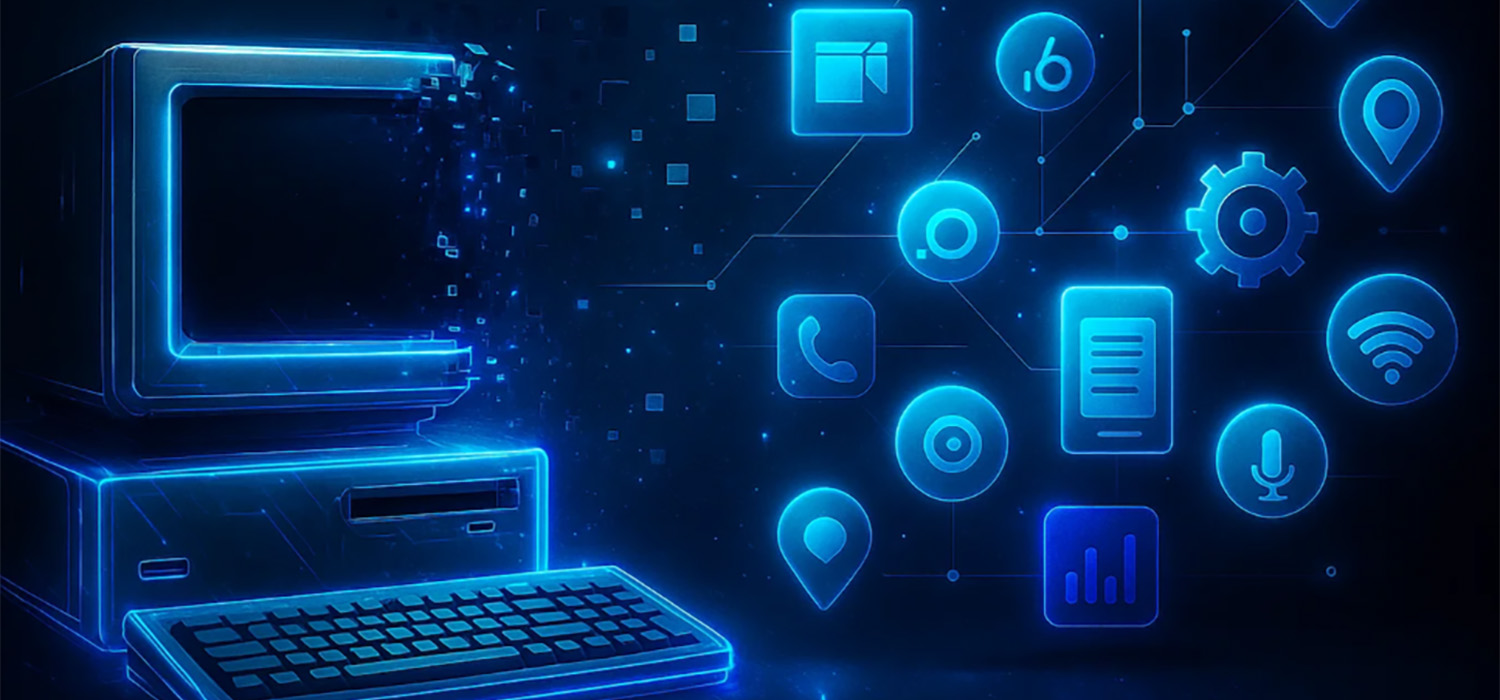Why Tech Stack Modernization Is Your Enterprise’s Make-or-Break Moment in 2025
For enterprises striving to stay competitive and innovative, modernizing legacy technology stacks is no longer optional—it’s an urgent priority. In 2025, organizations across industries are replacing decades-old core systems with cloud infrastructure, microservices, and AI-enabled platforms. The modern enterprise tech stack now spans cloud and edge infrastructure, containerized backend services, real-time data pipelines, and AI/ML integration—all aligned to deliver tangible business outcomes.
Yet, despite the compelling vision, most enterprises face a daunting journey. Fragmented applications, overwhelming technical debt, skill shortages, and the constant need to embed security and compliance complicate modernization efforts. Let’s unpack the biggest challenges, key trends, opportunities, and risks shaping this critical transformation.
The Biggest Challenges Enterprises Face in 2025
1. Legacy Systems and Technical Debt
Many large enterprises rely on mission-critical systems developed decades ago—mainframes, monolithic ERP suites, and other legacy platforms. Maintaining these consumes around 70% of IT budgets, diverting resources away from innovation. Gartner estimates that 40% of enterprise systems are past end-of-life, unsupported, and “dangerously brittle,” leading to inefficiencies and operational risk. Modernizing or replacing these systems is highly complex and costly. These legacy systems are deeply intertwined with business processes, meaning that every change risks triggering cascading failures. For industries like banking and government, the technical debt scale turns modernization into a multi-year or even decade-long challenge.
2. Fragmentation and Siloed Architectures
On average, enterprises operate 367 different applications to run their business—from large ERP suites to niche homegrown apps. These systems rarely integrate well, resulting in manual data reconciliation, duplicated effort, and stalled agility. Launching a new digital product often means touching dozens of disconnected systems. Modernization efforts frequently stall here, as companies struggle to untangle fragmented, siloed architectures and consolidate them into unified, cloud-friendly platforms.
3. Skill Gaps and Cultural Resistance
Modern tech stacks require expertise in cloud-native development, microservices, DevOps, AI integration, and more. Yet many enterprise IT teams are still developing these skills. A 2025 survey highlights persistent gaps in emerging technologies like AI, containerization, and low-code platforms. Alongside this is cultural resistance: developers and administrators accustomed to legacy systems may resist change or lack training on new paradigms. Business stakeholders may fear disruptions to operations. This human factor slows projects and often becomes a hidden bottleneck.
4. Security and Compliance by Design
Tech stack modernization is not purely a technical effort—it demands rigorous security and compliance management. Migrating workloads and data to cloud or new platforms can expose vulnerabilities if done incorrectly. Regulated industries such as finance and healthcare face strict data privacy and audit requirements across global operations. Modernization requires embedding security and compliance from day one: zero-trust security models, automated enforcement controls, and continuous monitoring. The risk of misconfigurations, like exposed cloud storage or missing encryption, is high during transitions, so balancing speed with security is an ongoing challenge.
5. Complexity of Data and Integration Modernization
Data powers modern applications, enabling analytics, AI, and personalization. Yet legacy data architectures—siloed databases and batch processing—are ill-suited for real-time, AI-driven services. Enterprises must modernize their data stack with data lakes, streaming platforms, and APIs for seamless data sharing. But data is often scattered across incompatible systems with quality issues. Migrating from batch to event-driven, real-time pipelines requires rebuilding data flows while keeping existing warehouses and reports operational—essentially “rebuilding the plane while flying it.”
6. Managing Change Without Disruption
Perhaps the most acute challenge is performing massive system upgrades while keeping the business running. Enterprises can’t simply pause operations to overhaul core systems. Even phased modernization carries risks of downtime and process failures. For example, banks migrating core banking platforms must ensure customers experience zero disruption—a notoriously difficult feat evidenced by high-profile outages in failed migrations. This “change the tires while driving” reality demands backward compatibility, parallel running systems, extensive user training, and meticulous cutover planning. The complexity and risk often lead to a “if it ain’t broke, don’t fix it” mentality, delaying necessary change.
Key Trends in Tech Stack Modernization (2025–2030)
- Cloud Migration & Multi-Cloud Strategies: Most enterprises have embraced cloud by 2025, shifting beyond lift-and-shift to holistic multi-cloud architectures to avoid vendor lock-in. Hybrid cloud remains common, with sensitive workloads on private clouds and others on public platforms. Cloud providers increasingly offer specialized hardware for AI and high-performance computing, driving performance modernization.
- Microservices & Modular Architectures: Enterprises continue breaking monoliths into microservices, designed as independent, API-driven components. Containerization and Kubernetes are mainstream, and DevOps practices enable continuous integration and delivery. However, lessons show overly granular microservices add complexity; pragmatic hybrid approaches like modular monoliths are gaining favor.
- Edge Computing & IoT Integration: With exponential growth in edge devices—from factories to retail and vehicles—data processing is migrating closer to data sources to reduce latency and offload central systems. Industries like telecom, automotive, and utilities are leading edge adoption, creating distributed meshes of edge nodes requiring new orchestration and management tools.
- AI & Data-Driven Architecture: AI features are becoming mission-critical in applications. By 2025, 70% of new applications include AI, requiring architectures that support ML training and inference with GPU acceleration, feature stores, and AI governance. Real-time analytics and embedded AI capabilities transform operational systems. Future trends include automated ML and generative AI integration.
- Platform Engineering & Internal Developer Platforms: To manage growing complexity, enterprises adopt platform engineering to offer internal developer portals that streamline deployment and infrastructure provisioning. This “Golden Path” approach standardizes best practices, reduces cognitive load on dev teams, and accelerates delivery.
- Legacy Modernization Tools & Approaches: Automated code translators, emulation platforms, strangler fig patterns, and low-code rebuilds are increasingly used to incrementally replace legacy systems without disruption. Collaborative vendor programs help migrate ERP systems to cloud suites. Data virtualization and dual-run techniques reduce cutover risks. These approaches aim to retire technical debt systematically by 2030.
Major Opportunities of Modernization
- Enhanced Agility & Innovation Speed: Modern architectures enable up to 4× faster delivery of new features. Faster innovation means quicker response to market shifts, improved customer experience, and new revenue streams. Continuous delivery and cloud platforms enable ideas to move from concept to production in days.
- Operational Efficiency & Cost Savings: Cloud-native infrastructure allows flexible scaling and reduces expensive data center overhead. Moving from costly mainframes to commodity cloud services cuts licensing and maintenance costs substantially. Automation reduces manual effort, enabling smaller teams to manage more. Freed budgets can fuel growth projects.
- Improved Customer Experience & Satisfaction: Real-time processing and AI-driven personalization create seamless digital experiences. Faster transactions, personalized offers, and reliable services drive higher customer satisfaction and lower churn. Entirely new digital channels—from telemedicine to connected cars—are enabled.
- Foundation for AI & Data Monetization: Modern data architectures unlock AI-driven insights and new revenue models through data partnerships. Retailers can optimize inventory and marketing in real time. Financial firms improve fraud detection and segmentation. Manufacturers develop predictive maintenance services. Modernization is essential to becoming truly data-driven.
- Resilience & Future-Proofing: Cloud-based systems improve reliability with built-in redundancy, disaster recovery, and auto-scaling. Architectures designed for resilience avoid outages like Southwest Airlines’ 2022 meltdown caused by legacy failures. Future-proof foundations enable integration of emerging technologies and partner ecosystems.
Critical Risks and Challenges Ahead
- Execution Risk: Modernization projects are notorious for delays, budget overruns, and failures due to underestimated legacy complexity, hidden dependencies, data migration errors, or incompatible custom code. Failures cause outages and reputational damage. Strong governance, phased rollouts, and contingency plans with clear outcome-driven objectives and executive alignment are critical.
- Interim Complexity (“Two-Speed” IT): Running legacy and modern systems in parallel creates complexity—data syncing, dual user interfaces, and duplicated maintenance. Prolonged transition phases increase costs and delay benefits. Careful interim architecture, integration layers, and change management are essential.
- Data Migration & Integrity Risks: Migrating data risks loss, corruption, or misinterpretation, threatening compliance and business continuity. Differences in data formats and extended cutover windows add risk. Dual-run strategies and third-party expertise mitigate but don’t eliminate risks. Rigorous testing and validation are mandatory.
- Security Vulnerabilities During Transition: New platforms and APIs introduce potential attack vectors, while legacy systems in limbo may lack updates. Increased attack surfaces during integration make enterprises prime targets. Security and compliance must be “baked in” from the start, not retrofitted.
- Legacy Mindset and Change Fatigue: Organizations risk modernizing only in name if cultural and process changes lag behind technology. Siloed teams, shadow IT, and resistance diminish benefits. Large transformations cause fatigue and cynicism if users aren’t engaged and trained. Cultural transformation is as vital as technical modernization.
Industries Facing the Greatest Modernization Challenges
- Financial Services: Legacy COBOL mainframes and 30+ year-old systems dominate, making core system replacement high-risk but essential to compete with fintechs. Security and compliance add complexity. Many banks adopt microservices on the periphery while planning core replacements over years.
- Government & Public Sector: Legacy systems 20-40 years old serve millions with strict budget and risk constraints. Progress is slow, hampered by fragmented departmental stacks and procurement cycles. Cloud-first policies and digital service integration are underway but legacy mainframes remain entrenched.
- Healthcare Providers & Life Sciences: Mix of legacy EHRs and emerging digital health tools complicate modernization. Patient safety and regulation impose strict validation. Interoperability with medical devices, labs, and external systems demands robust infrastructure and slow, careful rollout.
- Manufacturing & Energy: Legacy MES and SCADA systems with decades-old equipment can’t be replaced outright. Industry 4.0 integration of IoT, AI, and robotics requires bridging operational technology and IT. Critical infrastructure demands extreme reliability and regulatory approval.
- Telecommunications: Telcos modernize networks with software-defined and 5G cloud-native systems while maintaining complex legacy billing and customer management platforms. Integration challenges and regulatory oversight are significant. Consortiums and standards like Open RAN support modernization efforts.
Conclusion: The Next 3–5 Years Will Define Winners and Losers
Industries burdened by legacy systems, regulatory complexity, and critical 24/7 operations face the steepest modernization climbs. Success requires balancing ambition with risk management, technology with culture, and innovation with security.
Across the UK, North America, and Europe, the path is clear: enterprises must modernize their tech stacks—shedding the old, embracing new architectures, and transforming their people and processes.
Those who master this complex journey will gain agility, resilience, and competitive advantage—positioning themselves as the leaders of the next decade.






